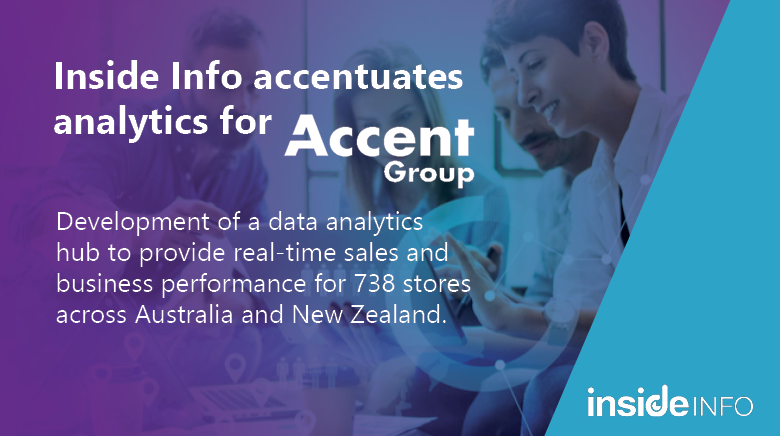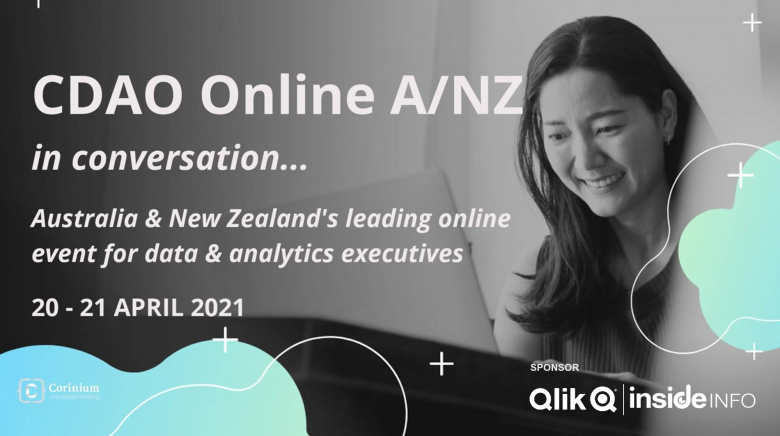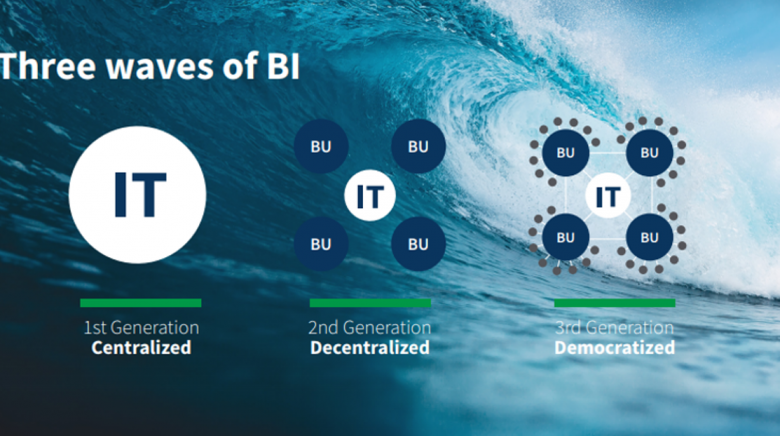At Inside Info we’ve been building and deploying Qlik analytics solutions now for 18 years and as such have seen the platform evolve greatly over time. From the initial launch of QlikView to then Qlik Sense, we’re now seeing the growth in Qlik’s cloud deployment options of Qlik Sense. In this article we wanted to highlight Qlik Sense Enterprise SaaS and what this has to offer.
Qlik Sense Enterprise SaaS
As part of Qlik’s cloud first strategy Qlik have developed their own cloud service, Qlik Cloud Services (QCS), on which Qlik manages cloud editions of the product portfolio to deliver to customers as software-as-a-service (SaaS) offerings. Qlik Sense Enterprise SaaS is Qlik’s premium cloud solution and gives businesses analytics without the complexities of installing and managing their own deployment, with a 99.9% uptime commitment from Qlik. Based on our experiences this SaaS version of Qlik Sense Enterprise is every bit as robust as the on-premise version.
The microservice-based architecture behind Qlik Sense Enterprise SaaS allows Qlik to host both Qlik Sense and QlikView® applications (apps) in a customer’s Qlik Sense Enterprise SaaS tenant. This means users have a single location to open and consume their Qlik apps. In addition to hosting Qlik apps, Qlik Sense Enterprise SaaS provides the ability to add links to other types of reports and assets such as documentation, providing a single portal for your users to consume all your analytics and reporting assets.
Associative In-Memory Apps
Qlik couples in-memory data storage technology with an Associative Engine that lets you analyse and freely navigate data intuitively. In its second generation, Qlik’s Associative Engine allows users to easily explore data and create visualisations based on data from multiple data sources simultaneously. These sources range from Excel and Access to databases such as Oracle and SQL Server to big data sources such as Cloudera and Redshift. Qlik Sense uses columnar, in-memory storage. Unique entries are only stored once in-memory, and relationships among data elements are represented as pointers. This allows for significant data compression, more data in RAM, and faster response times for your users. In some big data scenarios, data should remain at the source, which is why Qlik uses a built-in technique called On-Demand Application Generation. Data sources can be queried based on your users’ selections, yet still provide an associative experience to your user. Qlik’s Dynamic Views feature expands this capability further for the biggest data sources available.
User Interfaces
Access to the Qlik Sense Enterprise SaaS environment is through a zero-footprint web browser interface (known as the Qlik Sense Hub). The Qlik Sense web browser interface makes all aspects of development, drag-and-drop content creation, and consumption possible. Qlik Sense features a responsive design methodology to automatically display and resize visualisations with the appropriate layout and information to fit the device — whether it is a browser on a laptop or desktop, tablet, or smartphone. Built with current standards of HTML5, CSS3, JavaScript, and web sockets, Qlik Sense enables you to build and consume apps on any device. In addition to the web-based interface, Qlik Sense supports conversational analytics which integrates with major chat platforms such as Slack and MS Teams and data alerting capabilities to allow users to subscribe to and be notified of key changes to their data.
Notifications & Alerts
Notification capabilities allow users to configure Qlik Sense Enterprise SaaS system-based events. These events include status of application reloads, and your users’ status in Spaces. Users have control over their notification subscriptions, managing which channel (e-mail or web) they would like to receive them, as well as for opting to unsubscribe at any time.
Enterprise Data Capacity
Each Qlik Sense Enterprise SaaS tenant provides fully expandable storage and with a standard Qlik Sense Enterprise subscription, each Qlik Sense app can consume up to 5 gigabytes of memory. Qlik Sense Enterprise SaaS scales to meet the demand that is required on system resources with no requirements on users to configure any of the infrastructure. Certain use cases may require apps that use more than 5 gigabytes of memory. Qlik provides an Expanded Apps option for applications between 5 gigabytes and 10 gigabytes in memory. For apps larger than 10GB in memory, or workloads that require even larger capacities, Qlik offers a Dedicated Capacity option.
Move Apps Through A Development Lifecycle, Not Development Servers
With Qlik Sense Enterprise SaaS, apps are stored in discrete spaces. Each space has its own security settings, data connections and file storage. Customers can create as many development, test and production spaces as needed to suit their software development life cycle. This approach allows much greater flexibility, agility and reduced infrastructure expense than with a traditional on-premise setup.
Integrate On-Premise Data With SaaS
Qlik provides several solutions to integrate on-premise data sources with Qlik Sense Enterprise SaaS, such as Qlik DataTransfer. This is great for customers who do not require either a full data integration solution such as Qlik Catalog™ or a full Qlik Sense Enterprise Client-Managed deployment and do not wish to open firewalls to connect to on premise data. Qlik’s Data Integration platform which provides the ability to publish data from a wide breadth of data source end points to cloud storage locations works with Qlik Sense Enterprise SaaS. In particular Qlik Replicate (Qlik’s universal data replication and real time data ingestion), Qlik Catalog (A secure, enterprise-scale data catalog to easily find, prepare & deliver analytics ready data) and Qlik Compose (Agile data lake creation and data warehouse automation).
Qlik Sense on premise applications can be automatically synchronized with Qlik Sense Enterprise SaaS, while QlikView Publisher allows QlikView apps to be published to Qlik Sense Enterprise SaaS.
As you’d expect Qlik has start of the art site reliability, security and backup procedures in place as you’d expect form any enterprise level SaaS option.
For existing Qlik Sense Enterprise customers, Qlik Sense Enterprise SaaS has the capability to facilitate the transition to SaaS. Customers can choose to continue reloading apps on premise, move some apps to Qlik Sense Enterprise SaaS or use Qlik Data integration tools to access their data sources on-premise while moving consumption to the cloud. Integrated identity providers and flexible deployment and subscription options make this easy to manage and minimizes costs during the transition.
If you’d like to know more about Qlik Sense Enterprise SaaS download the Qlik Sense Enterprise SaaS Technical Overview Whitepaper below.
Download Whitepaper










